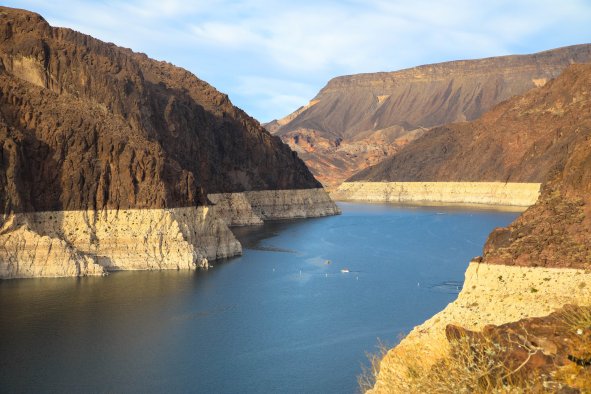A collection of "unexpected treasures" has been found shipwrecked in mysterious circumstances in the waters of The Bahamas.
Allen Exploration (AllenX) recently discovered a cluster of 24 individual iron cannons off the northern Bahamas—including extraordinarily "rare" examples that have been traced back to the Crimean War of 1853-1855.
The Crimean War cannons were once fired by forces of the Russian Empire against those of an ultimately victorious alliance—including the Ottoman Empire, France, Britain, and the Kingdom of Sardinia—at the Siege of Sevastopol.
But the question of how 19th-century Crimean War cannons manufactured thousands of miles away in Russia ended up in the tropical Caribbean waters of The Bahamas is among the archipelago's "most unexpected underwater revelations," a scientific report published in Allen Exploration Ocean Dispatches 6 describes.
"Cannons from the Crimean War aren't just unique in The Bahamas, they're one-offs in all seas across the Americas. Underwater archaeology, for sure, is just scratching the surface of the untold sunken wonders still out there," Carl Allen, director of Allen Exploration and an author on the report, told Newsweek.
The latest finds were made by AllenX last year during an archaeological survey attempting to document remains of a Spanish galleon called the Nuestra Señora de la Maravillas, which was lost in 1656. The remains of the galleon are scattered for miles south of the main wreck spot.
"We've found all kinds of archaeology out here. Everything from gold chains and amethysts the size of your thumb to clay tobacco pipes. But imperial Russian guns fired in anger over 170 years ago? That's stunning," Allen said in a news release.
The recently discovered cannons are located around 4 miles northwest of Memory Rock on the edge of the western Little Bahama Bank, lying on limestone bedrock at a depth of around 30 feet.
Among the cannons, one iron gun bears a double-headed eagle cast onto the barrel—the coat of arms of the Russian tsars. Close to this gun, the AllenX team found a broken off trunnion—a cylindrical cannon part that serves as a mounting or pivoting point.
Cannon trunnions tend to be plain, but this one features three lines of Cyrillic text that enabled the AllenX team to trace its origin to 19th century Russia.
"Among the dozens of cannons we've found in The Bahamas, it's not uncommon to see English, French, Spanish and Dutch guns. But all of them are completely plain. These Russian cannons jump out as special, thanks to their iconic crests and wealth of information incised on their trunnions," Allen told Newsweek.
In the report, the team discuss several hypotheses for how the Russian cannons ended up lost off The Bahamas. The most likely explanation, in their view, is linked—surprisingly—to another conflict: namely, the Second World War.
The team's most likely hypothesis proposes that the cannons were sourced for scrap to support the British war effort between 1939 and 1941 when old iron was needed to manufacture planes, ships and ordinance.
Their hypothesis is based on known evidence that Crimean War trophies were popular items for wartime salvage, the discovery of Russian cannons in the Bahamas—including a broken off trunnion—and the observation of broken barrels among the rest of the cannons.
After the defeat of the Russians in the Crimean War, Britain and France took thousands of cannons from the Siege of Sevastopol as spoils of war. In France, many of these were melted down, but in the U.K., they were often put on display as memorials. That is until World War II broke out and the need for scrap iron became key to the war effort.
Far more metal was scrapped in wartime Britain though than was needed or could be processed, according to Michael Pateman, another author of the report and director of The Bahamas Maritime Museum, the home of AllenX's underwater collections.
"Exactly what happened to those metal mountains has been an epic mystery of World War II Britain ever since," Pateman said in the news release.
The discovery of at least two Crimean War trophy cannons may shed light on the fate of some of this salvaged scrap iron, according to the AllenX team.
After World War II ended, the British government did not want the public to know the truth that so much highly valued ironwork had been scrapped in vain. So the unused scrap had to be made to disappear—with some spirited away to the far side of the world.
All the signs indicate that the rare Crimean War cannons found in the Bahamas were being prepared for scrap in World War II Britain, but the guns seemingly never reached the furnaces, according to Sean Kingsley, editor-in-chief of Wreckwatch magazine and another author on the report.
"We suspect a batch of guns—including antiques of the Crimean War—were sold on the side in the port of London to an English sea captain heading for the Americas. If the voyage had been successful, the guns would have been finally melted down, their story lost," Kingsley told Newsweek.
"Finding documentation for this crossing and vessel name is near impossible because the war operated under a secretive communications blackout."
There is still more work to do for the AllenX team, who are trying to determine whether all 24 cannons are from the same or different wreck sites—not to mention whether any of the other guns are also Crimean trophies.
"If we're right, somewhere out there must be the World War II-era ship that the Crimean trophy guns traveled on," James Sinclair, director of marine archaeology for AllenX and another author of the report, said in the news release.
The cannon cluster site also contains a mix of artifacts of many dates—including coins dating back to 1687, musket balls and cannon balls—hinting that the remains may come from at least two different wrecks.
Do you have a tip on a science story that Newsweek should be covering? Do you have a question about archaeology? Let us know via science@newsweek.com.
Disclaimer: The copyright of this article belongs to the original author. Reposting this article is solely for the purpose of information dissemination and does not constitute any investment advice. If there is any infringement, please contact us immediately. We will make corrections or deletions as necessary. Thank you.



